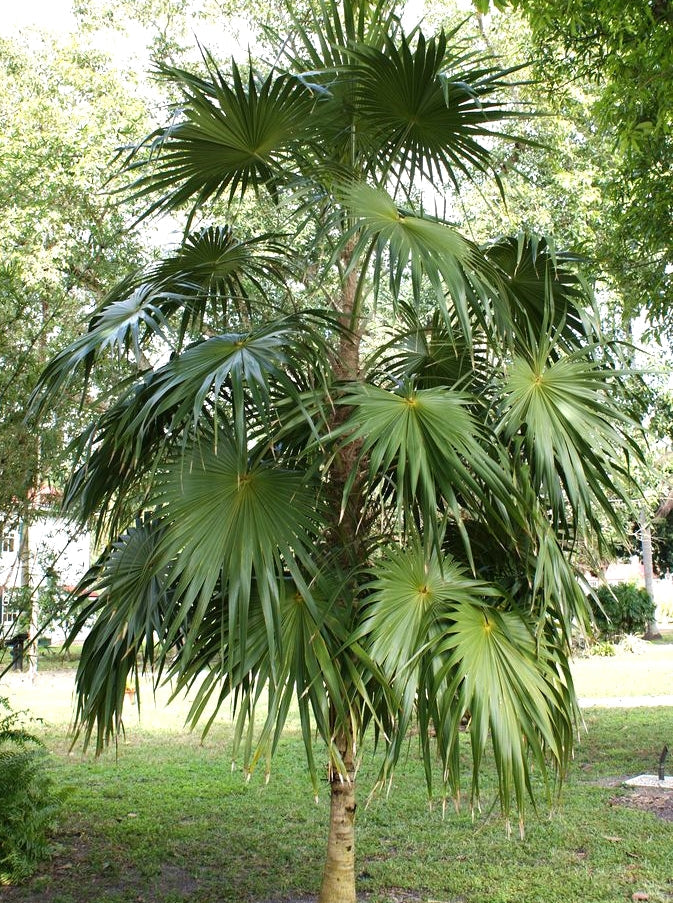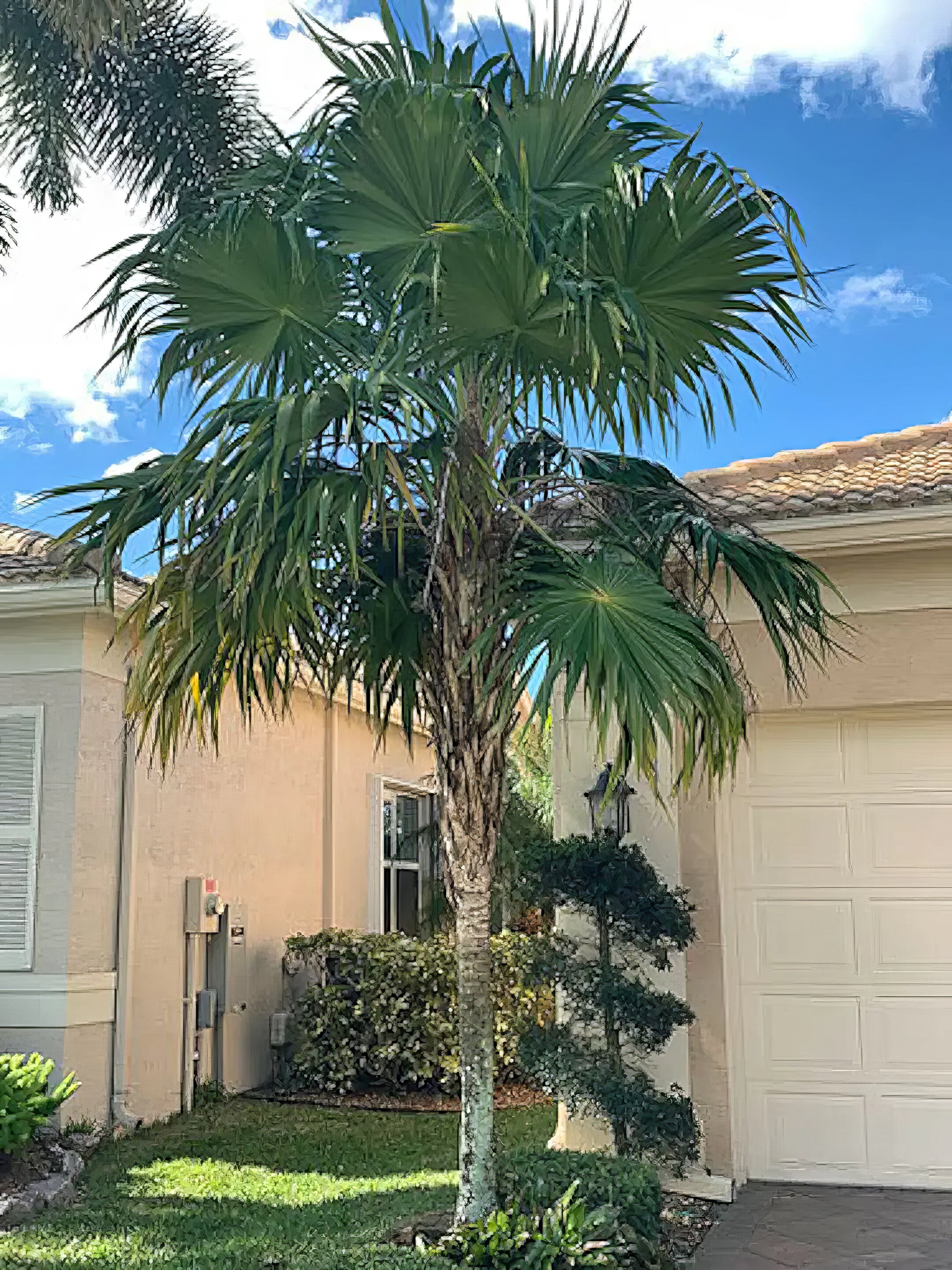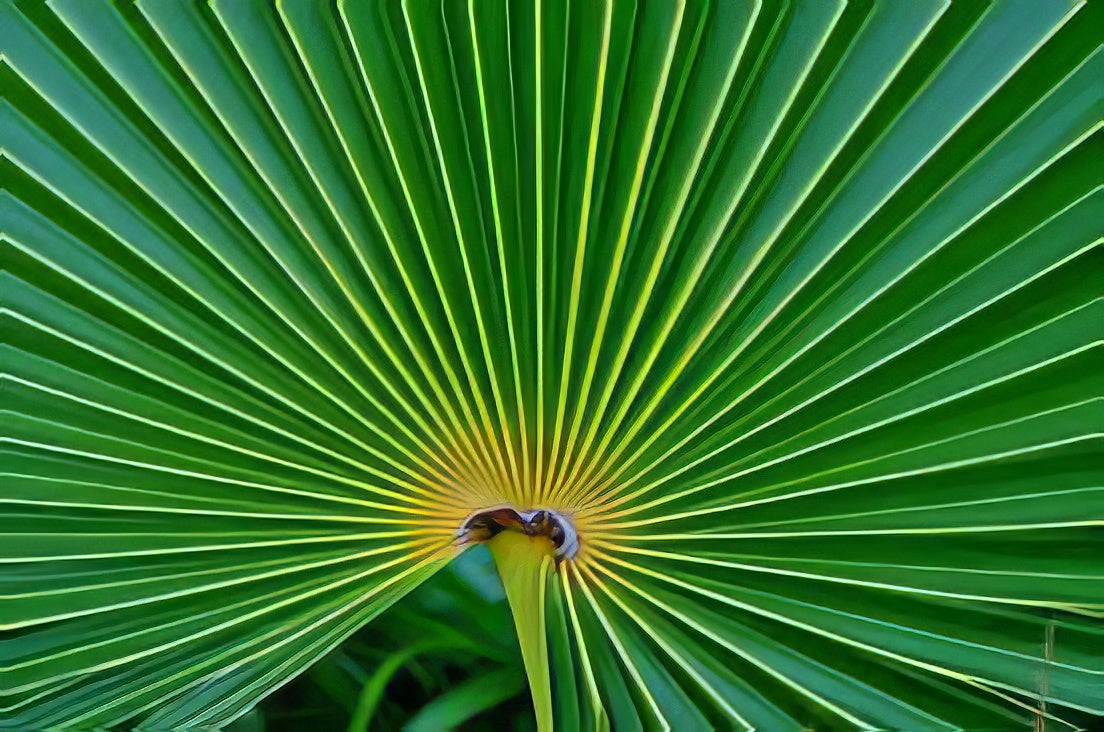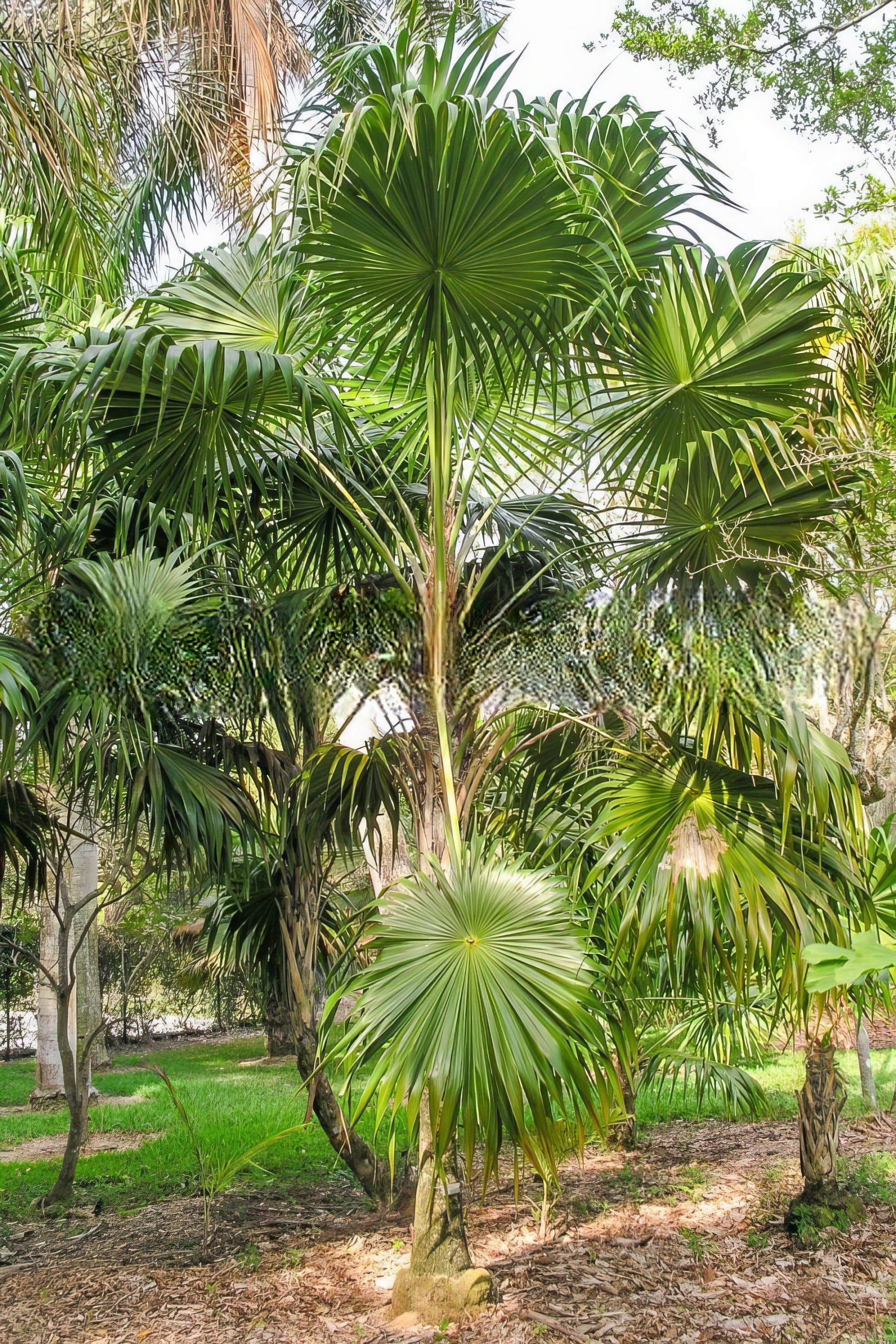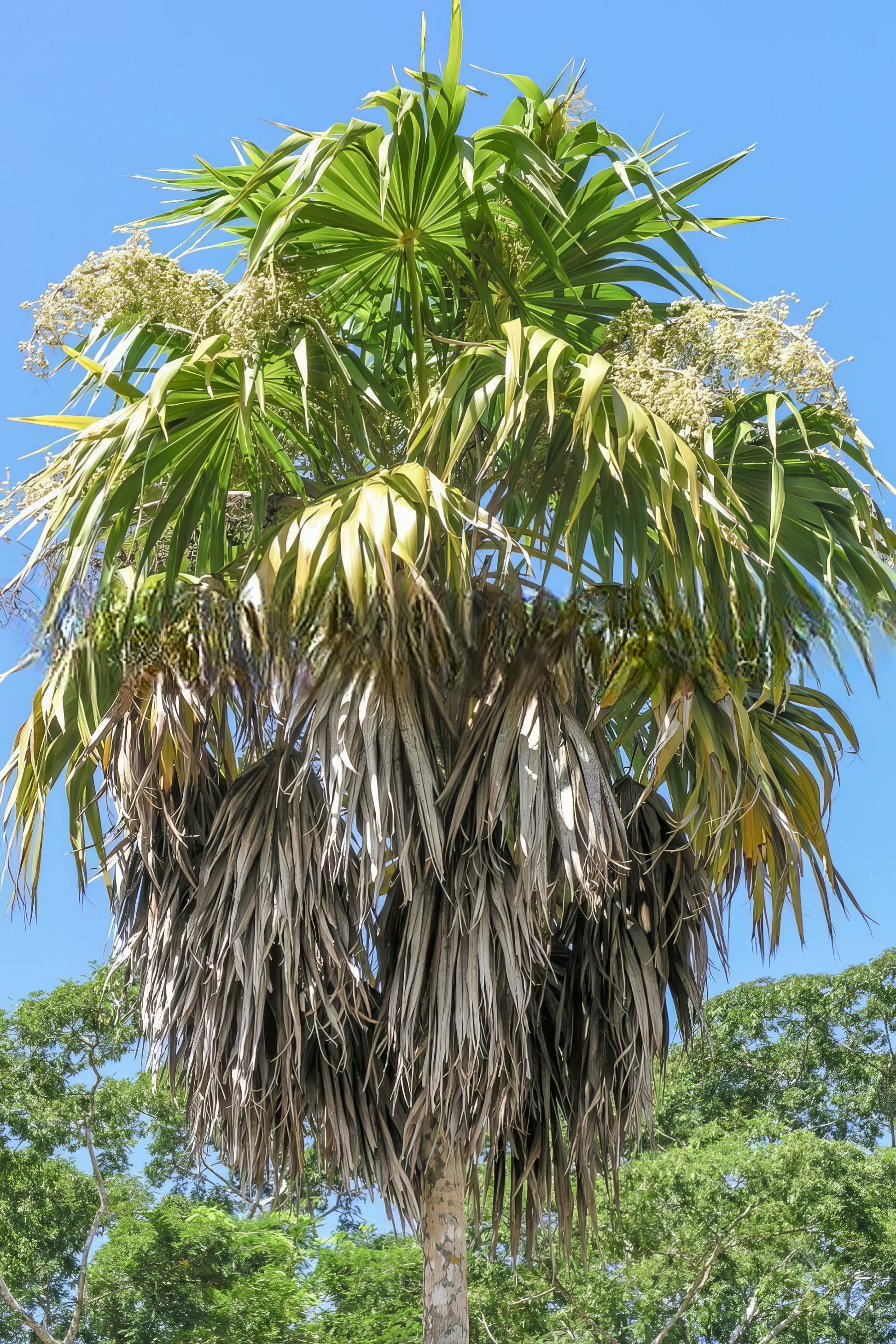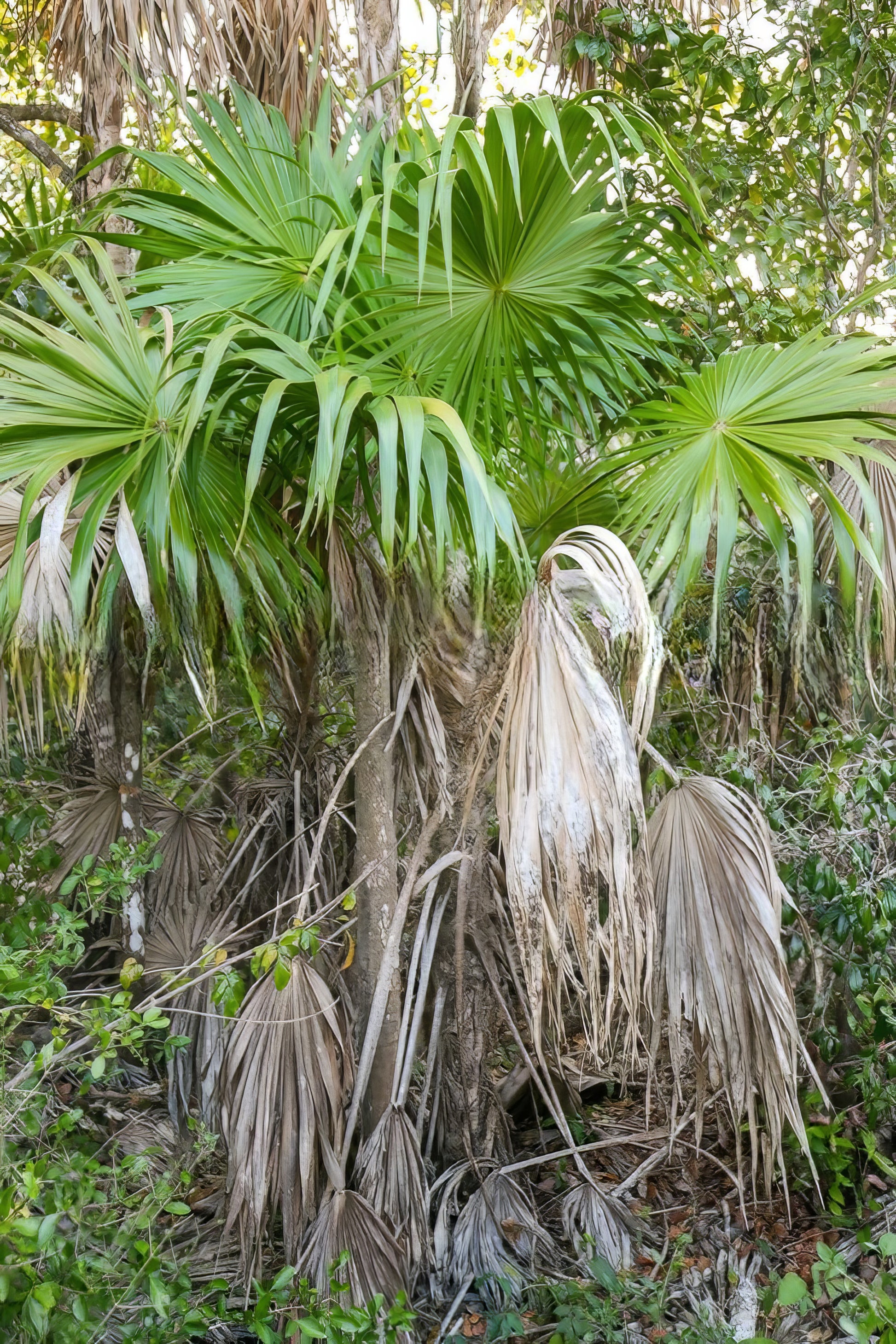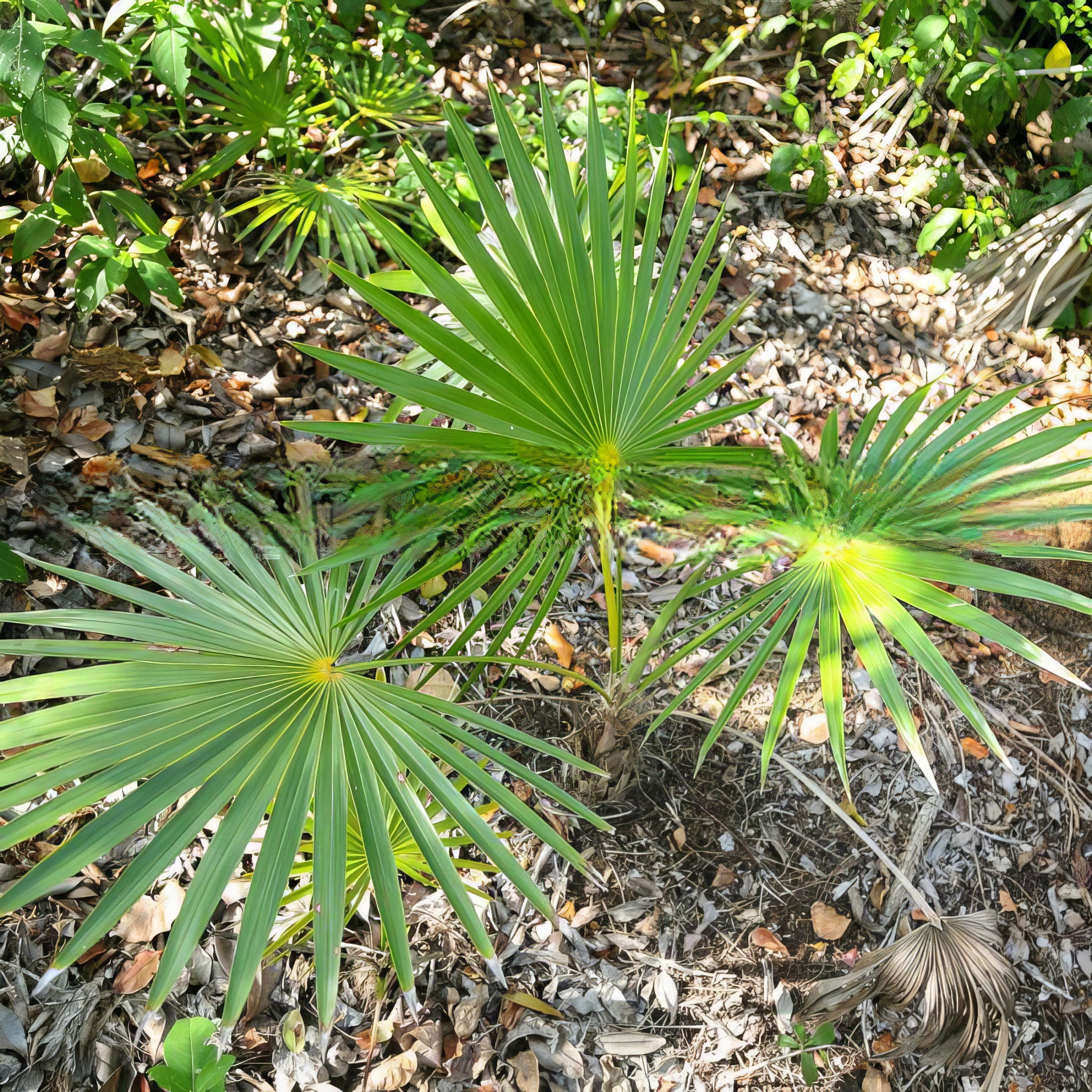VIRIAR
Thrinax radiata, Florida Thatch Palm - 25 pieces fresh seeds
Thrinax radiata, Florida Thatch Palm - 25 pieces fresh seeds
Regular price
$7.99 USD
Regular price
Sale price
$7.99 USD
Unit price
per
Tax included.
Couldn't load pickup availability
Thrinax radiata
commonly known as the Florida Thatch Palm, is a species of palm tree native primarily to the Caribbean, South Florida, and the Bahamas. It is well-known for its aesthetic appeal and is commonly used in landscaping due to its attractive features and moderate size.
Here are some characteristics and care information about the Florida Thatch Palm:
1. **Appearance**: This palm has a slender, solitary trunk that is slightly swollen at the base and ringed with the scars of shed fronds. It grows to a height of typically 10 to 20 feet, although it can reach up to 30 feet in its natural habitat. The leaves are bright green, fan-shaped, and have a somewhat silvery or whitish appearance on the underside. They form a rounded, lush crown at the top of the trunk.
2. **Flowers/Fruits**: Thrinax radiata produces small, white flowers that are held by long, branching inflorescences originating from among the leaves. The flowers are followed by small, round fruits that turn from green to a pale grey or white when ripe. These fruits are a food source for birds and other wildlife.
3. **Habitat**: In its native environment, the Florida Thatch Palm often grows in sandy, well-drained soils, particularly near the coast. It is quite tolerant of salt and drought, which makes it an ideal palm for seaside or urban locations.
4. **Landscaping**: It's a popular choice for coastal landscapes not just for its beauty, but also for its hardiness in the face of salt spray and windy conditions. Additionally, its moderate size makes it suitable for smaller yards, or as an understorey palm in larger landscapes.
5. **Care**: This palm prefers full sun but can tolerate some shade. It does best in well-draining soil and requires regular watering until established, after which it is relatively drought-tolerant. It's also relatively slow-growing, and while it can handle cold temperatures down to about 30°F (-1°C), it thrives in the warm, humid climate of its native habitat.
6. **Conservation**: Although the Florida Thatch Palm is not currently listed as endangered, like many native species, it faces threats from habitat loss due to urban development and possibly climate change. Efforts to conserve native populations are important for maintaining biodiversity.
7. **Uses**: Besides its ornamental use, the leaves of the Thrinax radiata have traditional uses as thatching material for roofs (hence the common name), and its wood has been used in the construction of some specialized local crafts.
Germinating seeds of the Thrinax radiata, or Florida Thatch Palm, is a rewarding project for a gardener but requires patience, as palm seeds can be slow to germinate compared to other plant seeds.
Here are the general steps and conditions necessary for successful germination:
1. **Obtaining Seeds**: Make sure you source fresh seeds, as viability decreases with time. The best time to collect seeds is when they have fully ripened on the tree and have turned a whitish color.
2. **Cleaning the Seeds**: Remove all the fruit flesh from around the seeds as this can lead to fungal issues and inhibit germination. This is typically done by soaking the seeds in water for a few days and then manually removing the remaining pulp.
3. **Soaking the Seeds**: Before planting, soak the cleaned seeds in water for one to three days. This process can help soften the seed coat and speed up germination.
4. **Planting Medium**: Use a planting medium that is well-draining but retains moisture, such as a mix of quality seed-starting mix and sand or perlite. The medium should be sterile to avoid the growth of mold or fungus that could damage the seed or seedling.
5. **Planting the Seeds**: Plant the seeds in the medium, not too deep - about to the depth of the seed's diameter. After planting, water thoroughly.
6. **Temperature and Humidity**: Thrinax radiata seeds germinate best in warm and humid conditions. Aim for a temperature range of around 80-100 degrees Fahrenheit (27-38 degrees Celsius). You can use a heat mat to maintain a constant temperature. Covering the pot with a plastic bag or placing it in a mini greenhouse can help maintain humidity.
7. **Watering**: Keep the soil moist but not waterlogged. Overwatering can lead to rot, while under-watering can cause the seed to fail to germinate.
8. **Patience**: Palm seeds are notorious for their slow germination. It might take anywhere from a month to several months for the seed to germinate. During this time, maintain the warm, humid environment, and keep the soil moist.
9. **Care After Germination**: Once the seed has sprouted, continue to keep it in a warm, bright environment, but out of direct sunlight as this may be too intense for young seedlings. Water when the top inch of soil feels dry.
Remember, germination rates can vary widely based on the freshness of the seed, environmental conditions, and the specific species of palm, so patience is key. Good luck with your palm germination project!
Materials
Materials
Shipping & Returns
Shipping & Returns
Dimensions
Dimensions
Care Instructions
Care Instructions


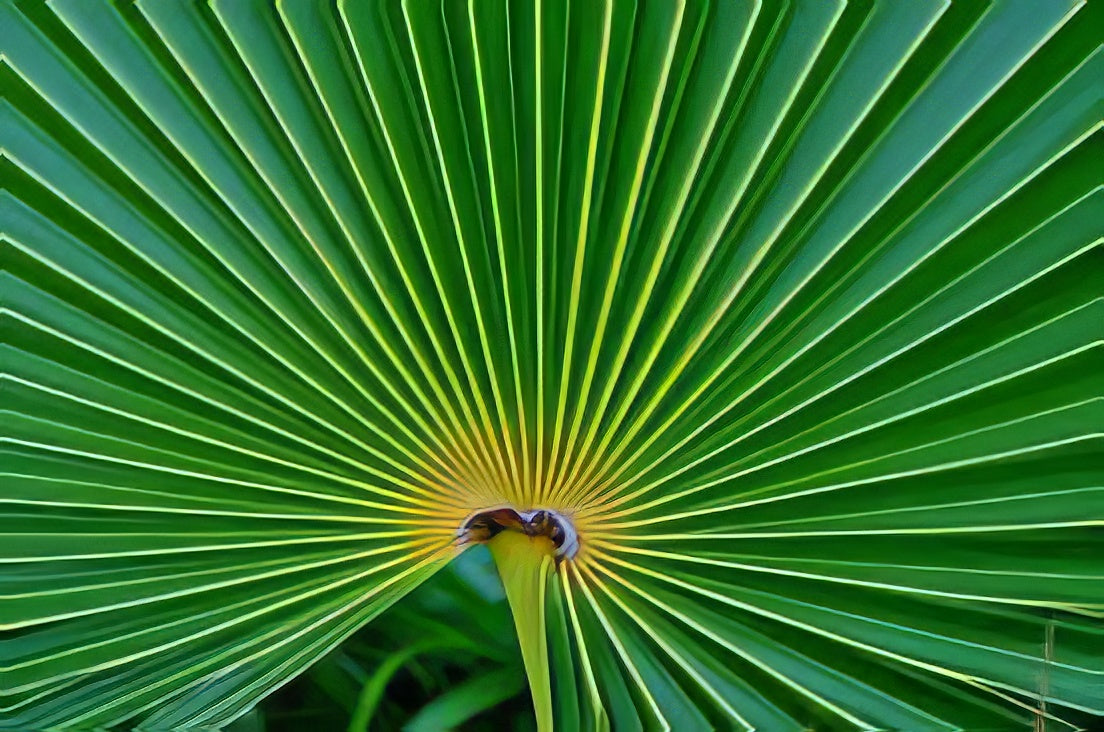




Image with text
Pair text with an image to focus on your chosen product, collection, or blog post. Add details on availability, style, or even provide a review.
-
Free Shipping
Pair text with an image to focus on your chosen product, collection, or blog post. Add details on availability, style, or even provide a review.
-
Hassle-Free Exchanges
Pair text with an image to focus on your chosen product, collection, or blog post. Add details on availability, style, or even provide a review.

